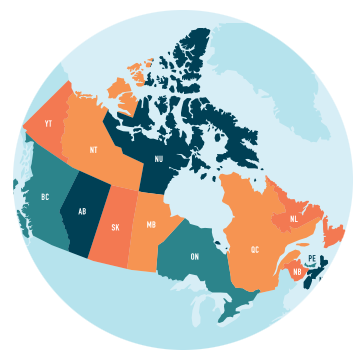Module 1: Professional Accountability and Prescribing
Lesson 3
Prescription Monitoring Programs (PMPs)
In the 2015 report entitled Prescription Monitoring Programs in Canada: Best Practice and Program Review, Sproule notes the purpose of PMPs is to:
- enhance patient care and assist in the safe use of controlled prescription drugs by monitoring outpatient prescription dispensing information;
- help reduce the harm resulting from the use of controlled prescription drugs; and
- assist in reducing the diversion of controlled prescription drugs.
The growing body of evidence related to prescription drug misuse has created concerns among both prescribers and their patients. Alarming trends prompted the Canadian Center on Substance Abuse (CCSA) to commission a report to examine the depth of the problem nationally to support the development of a coordinated plan to manage controlled drugs and substance use and management. In the report entitled First Do No Harm: Responding to Canada’s Prescription Drug Crisis, PMPs are recognized as one mechanism to help manage the problem of inappropriate use and diversion of controlled drugs and substances (CCSA, 2013). Learners may also wish to explore the CCSA website for other useful resources.
The importance of prescription monitoring is listed as one of the 10 universal precautions of pain medicine (Gourlay, Heit & Almahrezi, 2005). While this article was published before many of the more formalized systems that we now use were in place, the principles discussed remain foundational to safe prescribing of opioids and other controlled drugs and substances. All 10 principles affect decisions about prescribing a controlled drug or substance and should be kept in mind as you work through other modules in this resource as well.
References:
- Canadian Center on Substance Abuse. (2013). First Do No Harm: Responding to Canada’s Prescription Drug Crisis.
- Sproule, B. (2015). Prescription Monitoring Programs in Canada: Best Practice and Program Review.
- Gourlay, D. L., Heit, H. A., & Almahrezi, A. (2005). Universal Precautions in Pain Medicine: A Rational Approach to the Treatment of Chronic Pain. Pain Medicine 6(2), 107–112.
